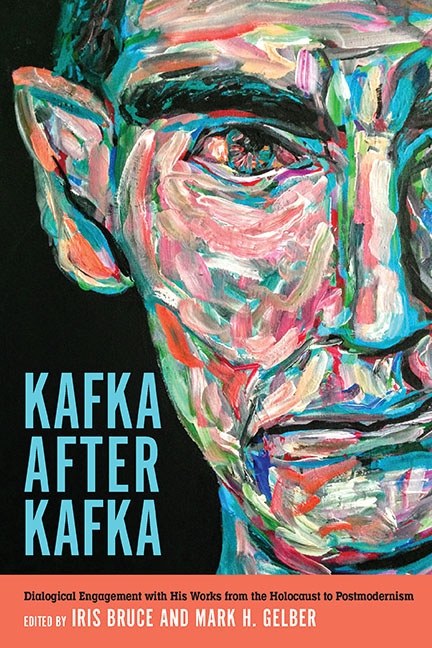Book contents
- Frontmatter
- Contents
- Acknowledgments
- Introduction
- Part I Philosophical and Literary Hermeneutics after the Holocaust
- Part II Kafka in Israeli Cultural Space
- Part III Kafka from Modernism to Postmodernism
- 8 The Beetle and the Butterfly: Nabokov's Lecture on Kafka's The Metamorphosis
- 9 “When the Still Image Projected on the Screen Bursts into Movement”: Cinematic Space-Time in Kafka's “A Country Doctor”
- 10 After the Animal: Kafka, Monstrosity, and the Graphic Novel
- 11 Kafkas after Kafka: Anglophone Poetry and the Image of Kafka
- Notes on the Contributors
- Index
11 - Kafkas after Kafka: Anglophone Poetry and the Image of Kafka
from Part III - Kafka from Modernism to Postmodernism
Published online by Cambridge University Press: 12 April 2019
- Frontmatter
- Contents
- Acknowledgments
- Introduction
- Part I Philosophical and Literary Hermeneutics after the Holocaust
- Part II Kafka in Israeli Cultural Space
- Part III Kafka from Modernism to Postmodernism
- 8 The Beetle and the Butterfly: Nabokov's Lecture on Kafka's The Metamorphosis
- 9 “When the Still Image Projected on the Screen Bursts into Movement”: Cinematic Space-Time in Kafka's “A Country Doctor”
- 10 After the Animal: Kafka, Monstrosity, and the Graphic Novel
- 11 Kafkas after Kafka: Anglophone Poetry and the Image of Kafka
- Notes on the Contributors
- Index
Summary
KAFKA—OR PERHAPS BETTER, Kafkas, those multiple readings of the works and life of Franz Kafka—have become an industry. One of Kafka's English-language editors, the philosopher Hannah Arendt, wrote to the publisher Salman Schocken on August 9, 1946: “Though during his lifetime he could not make a decent living, he will now keep generations of intellectuals both gainfully employed and well-fed.” Yet it was not only academics, like the present writer and his colleagues, who live off of the bones, but ironically also Anglophone poets. For what is odd about Franz Kafka is … that he seemed to have had no ear for poetry. He writes prose of every genre we can imagine (and invents some); poor plays; journalism and technical writing; BUT he does not write poetry. His fragmentary poetic juvenilia are just as embarrassing as all of ours would be. And yet he inspires poets. At least those writing in English following Edmund Wilson's New Yorker critical comparison of Kafka with Gogol and Poe: “He is quite true to his time and place, but it is surely a time and place in which few of us will want to linger.” The Kafka craze hit English-language poets especially after World War II, in a Britain celebrating a new age in the Festival of Britain (1951) as well as in Eisenhower's conservative America, the America of Sloan Wilson's The Man in the Gray Flannel Suit (1956).
One simple reason for this powerful identification is that his work seems to have been prefigured in American poetry by another writer who spent his life working for an insurance agency, though much more successfully. Kafka, who worked at private and state insurance agencies in Prague, has been read as a prophet of the collapse of civilization into the banalities and destruction of modernity. This view was shared by other Anglophone writers of the 1920s, especially Americans abroad such as Ezra Pound and his friend Tom Eliot. As Kafka was approaching the end of his life, dying slowly of laryngeal tuberculosis in a sanatorium on the outskirts of Vienna in 1924, a young insurance executive was beginning his poetic career in Hartford, Connecticut (almost as peripheral as was Kafka's Prague).
- Type
- Chapter
- Information
- Kafka after KafkaDialogic Engagement with his Works from the Holocaust to Postmodernism, pp. 199 - 218Publisher: Boydell & BrewerPrint publication year: 2019

